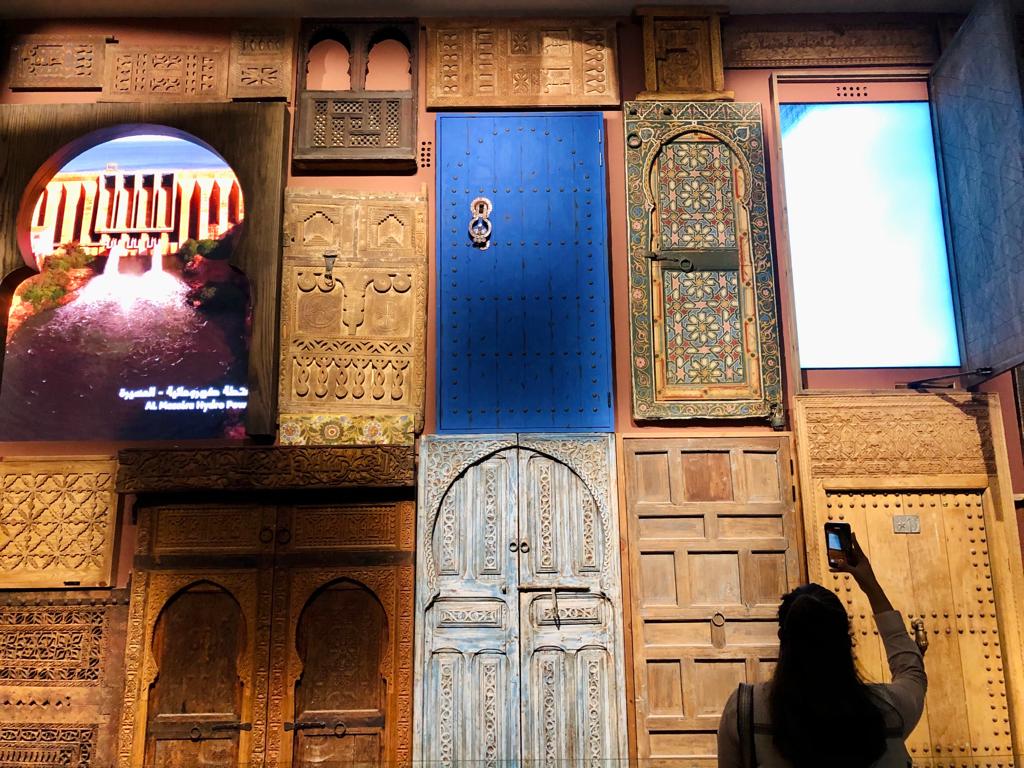Dubai – With seven floors and several rooms about opportunities and the country’s history, the Morocco pavilion draws visitors’ attention at Expo 2020 Dubai, taking place in the United Arab Emirates.

Located in the Opportunity district, the 4,000 square meters, 33 meters high building was designed by Moroccan architect Tarik Oualalou, inspired by Moroccan villages in the south of the country, and was made entirely of clay, using a traditional Moroccan rammed earth construction technique, in which the clay is compressed into wooden boxes. This Berber technique helps to regulate the internal temperature in hot, arid places.

The journey begins in a two-minute video with images of the Arab country in North Africa, its symbols, people, cuisine, and landscapes. Then, visitors are taken by a large elevator to the seventh floor, and from there, they go down the ramped corridors through an inner courtyard, as in a spiral. This patio is considered an essential spatial element in traditional Moroccan architecture, and the exhibition rooms along the way tell the story of the country’s regions and cultures.
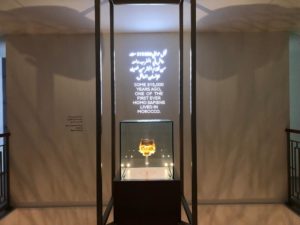
In the first room, the pavilion invites visitors to discover the oldest skull of Homo sapiens ever found, dating back 315,000 years. The discovery was unveiled in 2017 by a team of researchers from the National Institute of Archeology and Heritage in Rabat, the Moroccan capital. The room features a replica of the skull.
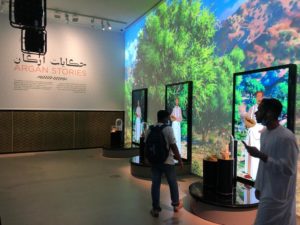
Stories about the Argan are told by female characters from different times of the country. They show how argan oil is vital to the local economy and a unique product only found in Morocco.
A room, reminiscent of an apothecary or an old pharmacy, inebriates with the fragrant aromas of herbs and spices grown in the country, such as marigolds, mint, and roses, and brings an interactive and aromatic experience.

An original work of art was created especially for the Morocco pavilion by artist Hassan Darsi. In a game of light, shadows, and wood colors, it is possible to see the African continent when taking photos of the sculpture.
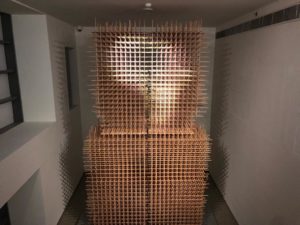
In a room full of typical Moroccan doors (opening picture), the pavilion shows sustainability data and the country’s intention to move towards a carbon-free energy model. The government aims to increase the share of energy generation from renewable sources to over 52% by 2030.
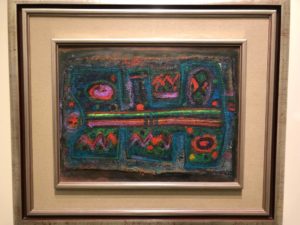
The pavilion also features a small gallery with works of modern art by Moroccan artists from the early 20th century, influenced by Western artists, until the country’s independence in 1956 and the return to Moroccan origins and search for identity. Ahmed Cherkaoui’s 1962 work depicts this period.
Opportunities in a young, innovative, and constantly evolving country are the pavilion’s proposal, showing the country’s commitment to a more sustainable future for the planet. The pavilion offers one of the best views of the Expo from its top and two restaurants, one on the top floor with fine cuisine and the other with street food, on the ground floor.
After Expo 2020 Dubai, the pavilion will be transformed into a housing complex, following sustainability principles. The building will include apartments, an 80 square meter swimming pool, gym, and common room.
Translated by Elúsio Brasileiro



